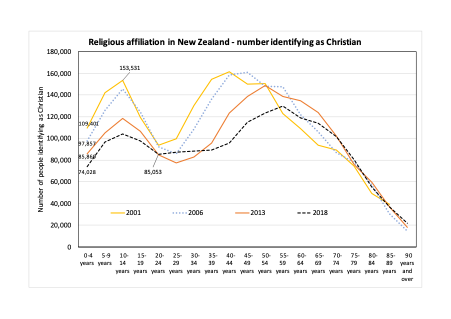Helping pastors and their leadership teams
thrive in a changing, complex world
There’s something seriously sad in the New Zealand Church happening
If you look at the incredibly low number of children (0-4) being brought to church and then the young people (20-24) identifying as Christians, then imagine the church if these low numbers outwork themselves over the next 20-30 years without any significant move of God. It’s going to be more than sad, it’s going to be tragic.
We desperately need a move of God’s Holy Spirit.
I got to thinking when we last had a move of God in New Zealand. When the Toronto Blessing came to the church I was leading in the late 1990’s, we had, (at the beginning) a full church every Sunday evening, with visitors ( Christian and non-Christian) turning up who were hungry for God. After 3-4 years the move of God’s Holy Spirit seemed to die away. During that time we saw lots of salvations, deliverances, people filled with the Holy Spirit. There were at times 30-40 people resting in the spirit somewhere in the church after they had received prayer. The move was in my eyes a very real touch of God; refreshing, healing, and bringing people to know Jesus. So why didn’t it last and where is the fruit?
Its great to be wise in hindsight but I feel the church still hasn’t addressed these issues, so I’m guessing until we do we will simply have to wait. Here is my take:
1.The church on the whole didn’t have any discipleship processes in place. I don’t mean house groups, where the bible was taught and fellowship happened. I mean discipleship that shows people how to discover how the bible can speak, as you ask questions of the text and then let it challenge us to put into practice what you had learned. If the study was on the Good Samaritan – who could I be one to this week and then to be held accountable to the group?
2. We didn’t teach people how to share their hope in Jesus. It has been said that most Kiwi Christians have over the years sung over 20,000 worship songs, heard 4,000 sermons but never led anybody to Christ. There’s something seriously wrong with a church’s discipleship processes when it is not reproducing and seeing salvations from within the life of a church.
3. The model of church has evolved to be culturally relevant, with its high-performing worship teams, engaging preaching, and amazing technological light, sound, and visual effects. A church I led, partnered for a season, with another youth organisation and purchased a huge marque that held 300-400 young people. At the outreaches, where the marque was pitched in a field, near a shopping mall, it felt to me, to be more like the book of Acts (even if it had to have a smoke machine!) than the slick church services many have today. A pastor of a large, successful church said to me privately last week, that he felt that a lot of what they as pastors were doing each Sunday “was running the machine.” He said, “only a small proportion of what I do is about discipling and evangelism which is where all the fruit is”.
Here’s my take on what the church in New Zealand needs to do in my “humble” opinion. It needs to review:
- Its discipleship processes. Is the “information & fellowship” method most churches use working? Or is it time to look at a method that produces more fruit? Ask the newer people to your church about their bible reading and prayer life? Ask them what changes have happened as a result of their walk with Jesus. I’m saddened by the large number of young believers who have no devotional life at all. If this is atypical of the 20-24 age group highlighted in the graph then the future church is in more serious trouble than we can imagine.
- It needs to look at how many new believers have asked for baptism in the church. If few are becoming Christians through members of the church then they need training. I’m amazed how few feel confident in sharing with a nonbeliever what their hope is.
- It needs to look at the model of the church and its local and international mission focus, and ask whether it is still relevant. Covid gave a pause on all activity, to reflect and even get glimpses of a new more effective way of doing things, only to go back and crank up the machine and feed it as in the past, being the only model of the church they know. The problem is that believers also during lockdown evaluated whether they wanted to be part of running the machine that was bearing no fruit and looked nothing like the church in the book of Acts, so have taken themselves and their finances elsewhere.
Note about the author: Gradon Harvey led churches for 30 years here and in Uruguay, and then for six years led a Christian Mission organisation. During that time traveling throughout NZ speaking in churches for the mission organisation, he saw firsthand how that the church was in serious decline. Three years ago he felt to resign as executive director and step out in faith, to begin to help churches address the issues listed above. North-South (https://northsouth.nz/) , the organisation that Gradon started, is part of a worldwide organisation that helps churches to get mobilised, trained in confident sharing of the faith, and teaches the model of discipleship that has seen 231,000 reproducing churches (largely in homes) planted among unreached people groups, by his worldwide mission organisation.
Contact
Email: gradon@northsouth.nz
Mobilisation In Action
© 2025 - North.South. All rights reserved.

